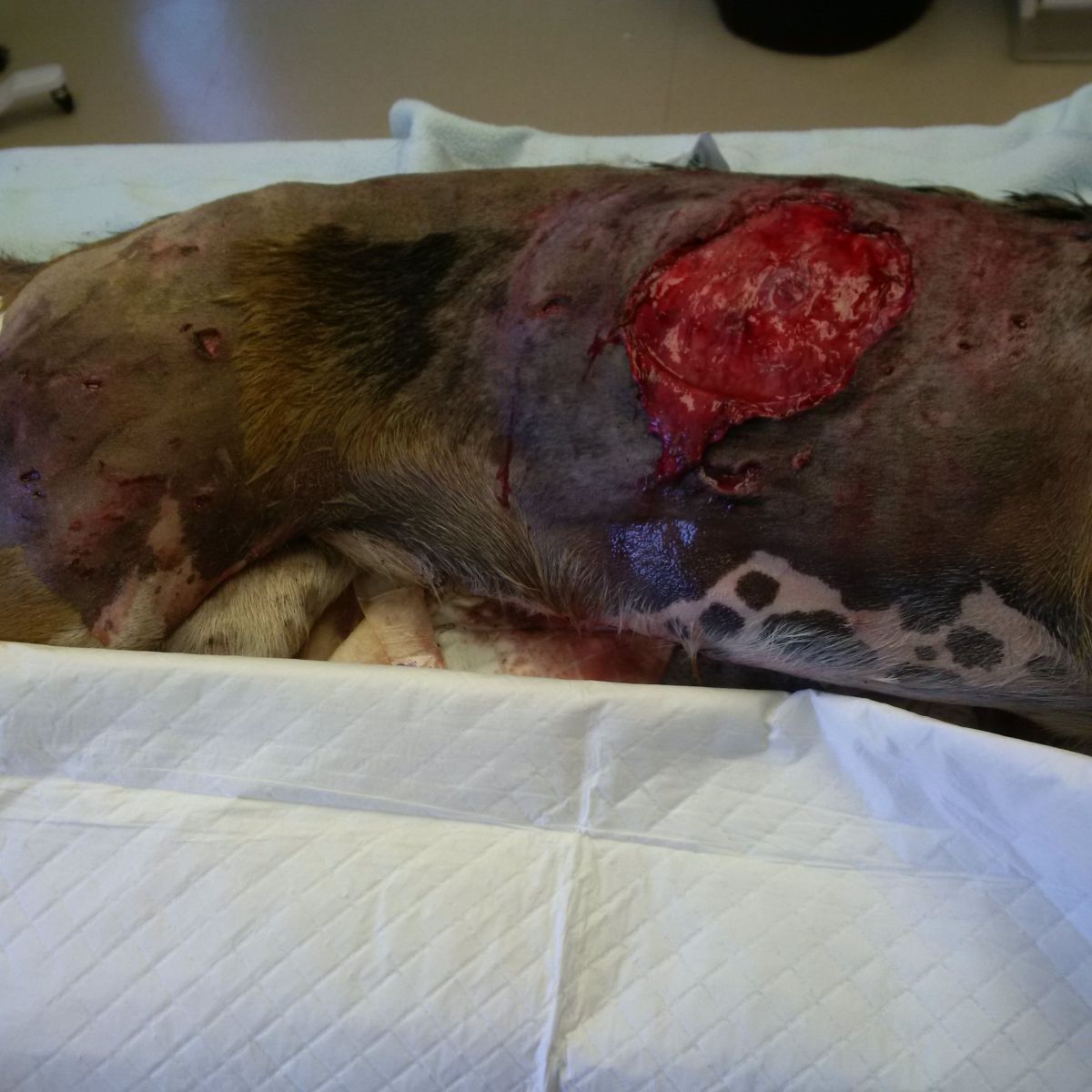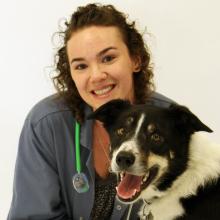Whether it’s a dog or a cow, a big nasty wound on an animal needs immediate attention to be able to save as much tissue as possible! A fight amongst bitches (female intact dogs) in heat lead me to my first true experience with wound management and my first thought? What do we do now?
Clean and debride the area
The skin of animals is covered with dirt and bacteria so it is crucial to remove as much dirt from the area as possible to prevent further contamination of the wound. Once the patient has been heavily sedated or placed under general anesthesia (this is painful remember), then cleaning can begin. This cleaning can include scrubbing with a surgical preparation soap, flushing punctures with a syringe filled with saline and most importantly clipping the fur away from the wound. A great trick that I saw at Paris Vet Clinic was putting sterile lubricant jelly inside the wound to act as a shield from any clipped fur getting inside. Clipping and cleaning will also allow you to better visualize the extent of the damage as some initial wounds may only be a tip of the iceberg to the trauma that has occurred. Remove any necrotic tissue with a scalpel blade to ensure fresh wound edges for the best closure and healing.
 The final product after cleaning and debriding will look something like this image here which is the aftermath of 3 dogs fighting. While this may look gruesome, the bright red fresh blood within the main area of the wound is very important because blood brings healing factors that are needed for wounds like this. As you can see this dog had numerous puncture holes beyond the one large open wound – many of these holes were not visible prior to clipping and each one needed to be cleaned to help fight infection.
The final product after cleaning and debriding will look something like this image here which is the aftermath of 3 dogs fighting. While this may look gruesome, the bright red fresh blood within the main area of the wound is very important because blood brings healing factors that are needed for wounds like this. As you can see this dog had numerous puncture holes beyond the one large open wound – many of these holes were not visible prior to clipping and each one needed to be cleaned to help fight infection.
Drainage and Closure
While the body works to heal this wound, fluid may accumulate and need a route for drainage so it is very common that we will place drains in to help the body deal with this. There are a variety of drain types such as Penrose Drains or closed-suction grenade drains that can all be used depending on what is available at your clinic. It is important to remember that in any situation with drainage, gravity is your friend! Place the exit spot of the drain as low (or ventral) as possible. In this case, we placed a Penrose Drain, which is a sterile piece of tubing that acts like a pipe for fluid to flow out of. Once the drain was placed, the large wound was sutured closed and the patient woken up from her general anesthesia. In situations where there are only small puncture holes or lacerations, the wounds are left open after being cleaned and debrided. This patient’s wound covered such a large area that it needed to be sutured closed but all the smaller puncture holes remained open.
It is also extremely important when dealing with wounds from an attack to place the patient on antibiotics as the mouths of our four-legged companions are extremely well stocked with bacteria. This patient received intravenous antibiotics while we cleaned her wound and was also sent home with oral antibiotics for 2 weeks. Pain management and patient comfort will be crucial as you can probably imagine how painful a wound like this would be!
Handling wounds can be intense and there are a lot of judgement calls that we as veterinarians need to make so it was great to be a part of this case to start to learn how those decisions are made! I can’t wait to see how this looks when it is healed and the sutures are removed! Have a great week!
